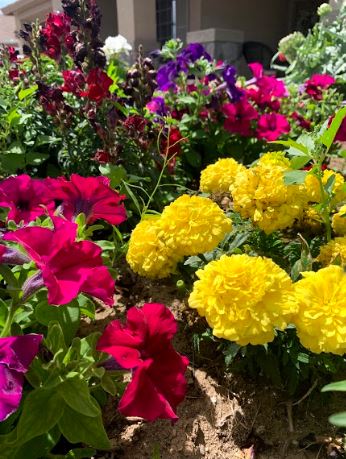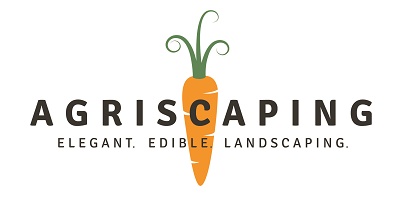Edible Flowers – A Touch of Elegance

Edible Flowers – A Touch of Elegance
*By Cindy Dixon
Flowers add color, fragrances, and encourage pollinators to your yard, but did you know they bring lively flavors and textures to your food as well?
The history of edible flowers can be traced back thousands of years with the first recorded mention in 140 BC. Many different cultures have included flowers in their diets throughout the years. In fact, dandelions were referred to in the Old Testament. The Romans used roses and violets in many of their dishes. The ancient Chinese and Greek herbalists used edible flowers for both medicinal and culinary purposes.
During the Victorian era, edible flowers were very popular, to the point of preserving flowers to be used during the winter months. Flower petals have been widely recognized throughout history for their delicacy, distinctive taste, and flair.
You’re eating a part of history when you consume flowers!
When considering adding flowers to your diet, one important thing to remember is that not all flowers are edible. Only consume flowers you know are edible such as rose petals, nasturtiums, calendula, and pansies, to name a few. Identify the flower exactly and eat only the edible flowers and edible parts of the flower. NEVER use pesticides, herbicides, or other chemicals on any part of the plant that produces blossoms you plan to eat. Refrain from using flowers found at nurseries or garden centers for culinary purposes unless accompanied by a food crop label. Organically growing flowers in your own garden ensures the blossoms are free from pesticides/etc.
When incorporating flowers into your culinary dishes, use them sparingly due to the fact digestive complications can occur when consuming large amounts. Think of the flowers as the ‘touch’ of elegance, not a heavy-handed approach to elegance.
How do flowers taste? Taste, as with any crop, can vary depending on location, soil, and environmental conditions, growing seasons, and from year to year. The floral palate spans the spectrum from sweet to bitter and from mild to spicy/peppery. Most herb flowers taste similar to the leaf, but a bit spicier. Flowers are not only flavorful; many are high in vitamin C. Roses (especially rose hips), Marigolds and Nasturtiums are a few examples.
When harvesting flowers, pick early in the morning when the water content is the highest. Pick opened blossoms unless the recipe specifies buds. The mature flower tastes the best; the tasty part of the flower is the petals. Clean the flower with cool water to remove any dirt and/or insects. To store your flowers, place them in a glass of water or between damp towels tucked inside a plastic bag in the refrigerator. Try to use the flowers the same day as harvested. If you do need to refresh, place the flowers in ice water for a moment or two.
Here are some examples of edible flowers you might want to try:
o Flowers tend to have a stronger taste than leaves
o Great in salads
o Flavors range from spicy to bitter, tangy to peppery
o Resembles saffron
***DO NOT CONSUME IF THEY HAVE BEEN SPRAYED
WITH HERBICIDES/PESTICIDES
o Flowers are sweetest when picked young
o Buds are tastier than the flowers
o Use in salads, decorate cakes or soft cheese
o Great addition to drinks, soups, desserts, or salads
o One of the most commonly used edible flower
o Peppery flavor
o Can be stuffed or sprinkled in salads
Edible petals are easy to grow. Their flavors range from sweet to snappy and they complement everything from artichokes to zabaglione.
Flowers not only add color to your landscape, but they can also bring lively flavors, colors, and textures to your food, as well as a touch of elegance.
To learn more, join us in our upcoming webinar, Agriscaping Secrets and Edible Flowers. To find out what webinars or live classes are available for free click here!
**You can find out more about Cindy Dixon at lasvegas.agriscaping.com .

